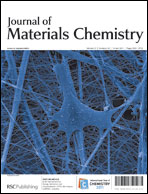Electrical energy storage devices will play a key role in the development of sustainable energy production and usage, and for integrating intermittent and renewable sources into the energy landscape. One strategy for developing improved energy storage materials and devices is to take advantage of capacitive and pseudocapacitive electrodes such as activated carbons or conducting polymers. However, these materials generally suffer from low energy densities. Functionalization of these materials with pendant redox units has been proposed as a method to improve the energy densities while maintaining the high rate capability. In this report, we present the synthesis and thorough characterization of one such candidate pendant molecule, 2,5-bis(methylthio)thieno[3,2-b]thiophene, and assess its potential use as a cathode material. Electrochemical, spectroelectrochemical and computational data suggest that bis(methylthio)thieno[3,2-b]thiophene is a lightweight molecule, capable of undergoing multiple reversible redox processes, and a good candidate for improving the energy density of cathode materials while still offering high rate (power) capability.
![Graphical abstract: Towards organic energy storage: characterization of 2,5-bis(methylthio)thieno[3,2-b]thiophene](/en/Image/Get?imageInfo.ImageType=GA&imageInfo.ImageIdentifier.ManuscriptID=C1JM10664C&imageInfo.ImageIdentifier.Year=2011)
You have access to this article
 Please wait while we load your content...
Something went wrong. Try again?
Please wait while we load your content...
Something went wrong. Try again?
![Graphical abstract: Towards organic energy storage: characterization of 2,5-bis(methylthio)thieno[3,2-b]thiophene](/en/Image/Get?imageInfo.ImageType=GA&imageInfo.ImageIdentifier.ManuscriptID=C1JM10664C&imageInfo.ImageIdentifier.Year=2011)

 Please wait while we load your content...
Please wait while we load your content...